预定义变量
自 PHP 4.1.0 起,取得外部变量的首选方法是用下面提及的超全局变量。在此之前,人们要么依赖 register_globals,要么就是长长的预定义 PHP 数组($HTTP_*_VARS)。自 PHP 5.0.0 起,长格式的 PHP 预定义变量可以通过设置 register_long_arrays 来屏蔽。
服务器变量:$_SERVER
注: 在 PHP 4.1.0 及以后版本使用。之前的版本,使用 $HTTP_SERVER_VARS。
$_SERVER 是一个包含诸如头信息(header)、路径(path)和脚本位置(script locations)的数组。数组的实体由 web 服务器创建。不能保证所有的服务器都能产生所有的信息;服务器可能忽略了一些信息,或者产生了一些未在下面列出的新的信息。这意味着,大量的这些变量在 CGI 1.1 规范中说明,所以应该仔细研究一下。
这是一个“superglobal”,或者可以描述为自动全局变量。这只不过意味这它在所有的脚本中都有效。在函数或方法中不需要使用 global $_SERVER; 访问它,就如同使用 $HTTP_SERVER_VARS 一样。
$HTTP_SERVER_VARS 包含着同样的信息,但是不是一个自动全局变量(注意:$HTTP_SERVER_VARS 和 $_SERVER 是不同的变量,PHP 处理它们的方式不同)。
如果设置了 register_globals 指令,这些变量也在所有脚本中可用;也就是,分离了 $_SERVER 和 $HTTP_SERVER_VARS 数组。相关信息,请参阅安全的相关章节使用 Register Globals。这些单独的全局变量不是自动全局变量。
或许会发现下面列出的某些 $_SERVER 元素并不可用。注意,如果以命令行方式运行 PHP,下面列出的元素几乎没有有效的(或是没有任何实际意义的)。
“PHP_SELF”
当前正在执行脚本的文件名,与 document root 相关。举例来说,在 URL 地址为 http://example.com/test.php/foo.bar 的脚本中使用 $_SERVER['PHP_SELF'] 将会得到 /test.php/foo.bar 这个结果。__FILE__ 常量包含当前(例如包含)文件的绝对路径和文件名。
如果 PHP 以命令行方式运行,该变量在 PHP 4.3.0 之前无效。
“argv”
传递给该脚本的参数。当脚本运行在命令行方式时,argv 变量传递给程序 C 语言样式的命令行参数。当调用 GET 方法时,该变量包含请求的数据。
“argc”
包含传递给程序的命令行参数的个数(如果运行在命令行模式)。
“GATEWAY_INTERFACE”
服务器使用的 CGI 规范的版本。例如,“CGI/1.1”。
“SERVER_NAME”
当前运行脚本所在服务器主机的名称。如果该脚本运行在一个虚拟主机上,该名称是由那个虚拟主机所设置的值决定。
“SERVER_SOFTWARE”
服务器标识的字串,在响应请求时的头信息中给出。
“SERVER_PROTOCOL”
请求页面时通信协议的名称和版本。例如,“HTTP/1.0”。
“REQUEST_METHOD”
访问页面时的请求方法。例如:“GET”、“HEAD”,“POST”,“PUT”。
注: 如果请求的方式是 HEAD,PHP 脚本将在送出头信息后中止(这意味着在产生任何输出后,不再有输出缓冲)。
“REQUEST_TIME”
请求开始时的时间戳。从 PHP 5.1.0 起有效。
“QUERY_STRING”
查询(query)的字符串(URL 中第一个问号 ? 之后的内容)。
“DOCUMENT_ROOT”
当前运行脚本所在的文档根目录。在服务器配置文件中定义。
“HTTP_ACCEPT”
当前请求的 Accept: 头信息的内容。
“HTTP_ACCEPT_CHARSET”
当前请求的 Accept-Charset: 头信息的内容。例如:“iso-8859-1,*,utf-8”。
“HTTP_ACCEPT_ENCODING”
当前请求的 Accept-Encoding: 头信息的内容。例如:“gzip”。
“HTTP_ACCEPT_LANGUAGE”
当前请求的 Accept-Language: 头信息的内容。例如:“en”。
“HTTP_CONNECTION”
当前请求的 Connection: 头信息的内容。例如:“Keep-Alive”。
“HTTP_HOST”
当前请求的 Host: 头信息的内容。
“HTTP_REFERER”
链接到当前页面的前一页面的 URL 地址。不是所有的用户代理(浏览器)都会设置这个变量,而且有的还可以手工修改 HTTP_REFERER。因此,这个变量不总是真实正确的。
“HTTP_USER_AGENT”
当前请求的 User-Agent: 头信息的内容。该字符串表明了访问该页面的用户代理的信息。一个典型的例子是:Mozilla/4.5 [en] (X11; U; Linux 2.2.9 i586)。也可以使用 get_browser() 得到此信息。
“HTTPS”
如果脚本是通过 HTTPS 协议被访问,则被设为一个非空的值。
“REMOTE_ADDR”
正在浏览当前页面用户的 IP 地址。
“REMOTE_HOST”
正在浏览当前页面用户的主机名。反向域名解析基于该用户的 REMOTE_ADDR。
注: 必须配置 Web 服务器来建立此变量。例如 Apache 需要在 httpd.conf 中有 HostnameLookups On。参见 gethostbyaddr()。
“REMOTE_PORT”
用户连接到服务器时所使用的端口。
“SCRIPT_FILENAME”
当前执行脚本的绝对路径名。
注: 如果脚本在 CLI 中被执行,作为相对路径,例如 file.php 或 ../file.php,$_SERVER['SCRIPT_FILENAME'] 将包含用户指定的相对路径。
“SERVER_ADMIN”
该值指明了 Apache 服务器配置文件中的 SERVER_ADMIN 参数。如果脚本运行在一个虚拟主机上,则该值是那个虚拟主机的值。
“SERVER_PORT”
服务器所使用的端口。默认为“80”。如果使用 SSL 安全连接,则这个值为用户设置的 HTTP 端口。
“SERVER_SIGNATURE”
包含服务器版本和虚拟主机名的字符串。
“PATH_TRANSLATED”
当前脚本所在文件系统(不是文档根目录)的基本路径。这是在服务器进行虚拟到真实路径的映像后的结果。
注: PHP 4.3.2 之后,PATH_TRANSLATED 在 Apache 2 SAPI 模式下不再和 Apache 1 一样隐含赋值,而是若 Apache 不生成此值,PHP 便自己生成并将其值放入 SCRIPT_FILENAME 服务器常量中。这个修改遵守了 CGI 规范,PATH_TRANSLATED 仅在 PATH_INFO 被定义的条件下才存在。
Apache 2 用户可以使用 httpd.conf 中的 AcceptPathInfo On 来定义 PATH_INFO。
“SCRIPT_NAME”
包含当前脚本的路径。这在页面需要指向自己时非常有用。__FILE__ 包含当前文件的绝对路径和文件名(例如包含文件)。
“REQUEST_URI”
访问此页面所需的 URI。例如,“/index.html”。
“PHP_AUTH_DIGEST”
当作为 Apache 模块运行时,进行 HTTP Digest 认证的过程中,此变量被设置成客户端发送的“Authorization”HTTP 头内容(以便作进一步的认证操作)。
“PHP_AUTH_USER”
当 PHP 运行在 Apache 或 IIS(PHP 5 是 ISAPI)模块方式下,并且正在使用 HTTP 认证功能,这个变量便是用户输入的用户名。
“PHP_AUTH_PW”
当 PHP 运行在 Apache 或 IIS(PHP 5 是 ISAPI)模块方式下,并且正在使用 HTTP 认证功能,这个变量便是用户输入的密码。
“AUTH_TYPE”
当 PHP 运行在 Apache 模块方式下,并且正在使用 HTTP 认证功能,这个变量便是认证的类型。
环境变量:$_ENV
注: 在 PHP 4.1.0 及以后版本使用。之前的版本,使用 $HTTP_ENV_VARS。
在解析器运行时,这些变量从环境变量转变为 PHP 全局变量名称空间(namespace)。它们中的许多都是由 PHP 所运行的系统决定。完整的列表是不可能的。请查看系统的文档以确定其特定的环境变量。
其它环境变量(包括 CGI 变量),无论 PHP 是以服务器模块或是以 CGI 处理方式运行,都在这里列出了。
这是一个“superglobal”,或者可以描述为自动全局变量。这只不过意味这它在所有的脚本中都有效。在函数或方法中不需要使用 global $_ENV; 来访问它,就如同使用 $HTTP_ENV_VARS 一样。
$HTTP_ENV_VARS 包含着同样的信息,但是不是一个自动全局变量(注意:$HTTP_ENV_VARS 和 $_ENV 是不同的变量,PHP 处理它们的方式不同)。
如果设置了 register_globals 指令,这些变量也在所有脚本中可用;也就是,分离了 $_ENV 和 $HTTP_ENV_VARS 数组。相关信息,请参阅安全的相关章节使用 Register Globals。这些单独的全局变量不是自动全局变量。
HTTP Cookies:$_COOKIE
注: 在 PHP 4.1.0 及以后版本使用。之前的版本,使用 $HTTP_COOKIE_VARS。
通过 HTTP cookies 传递的变量组成的数组。是自动全局变量。
这是一个“superglobal”,或者可以描述为自动全局变量。这只不过意味这它在所有的脚本中都有效。在函数或方法中不需要使用 global $_COOKIE; 来访问它,就如同使用 $HTTP_COOKIE_VARS 一样。
$HTTP_COOKIE_VARS 包含着同样的信息,但是不是一个自动全局变量(注意:$HTTP_COOKIE_VARS 和 $_COOKIE 是不同的变量,PHP 处理它们的方式不同)。
如果设置了 register_globals 指令,这些变量也在所有脚本中可用;也就是,分离了 $_COOKIE 和 $HTTP_COOKIE_VARS 数组。相关信息,请参阅安全的相关章节使用 Register Globals。这些单独的全局变量不是自动全局变量。
HTTP GET 变量:$_GET
注: 在 PHP 4.1.0 及以后版本使用。之前的版本,使用 $HTTP_GET_VARS。
通过 HTTP GET 方法传递的变量组成的数组。是自动全局变量。
这是一个“superglobal”,或者可以描述为自动全局变量。这只不过意味这它在所有的脚本中都有效。在函数或方法中不需要使用 global $_GET; 来访问它,就如同使用 $HTTP_GET_VARS 一样。
$HTTP_GET_VARS 包含着同样的信息,但是不是一个自动全局变量(注意:$HTTP_GET_VARS 和 $_GET 是不同的变量,PHP 处理它们的方式不同)。
如果设置了 register_globals 指令,这些变量也在所有脚本中可用;也就是,分离了 $_GET 和 $HTTP_GET_VARS 数组。相关信息,请参阅安全的相关章节使用 Register Globals。这些单独的全局变量不是自动全局变量。
HTTP POST 变量:$_POST
注: 在 PHP 4.1.0 及以后版本使用。之前的版本,使用 $HTTP_POST_VARS。
通过 HTTP POST 方法传递的变量组成的数组。是自动全局变量。
这是一个“superglobal”,或者可以描述为自动全局变量。这只不过意味这它在所有的脚本中都有效。在函数或方法中不需要使用 global $_POST; 来访问它,就如同使用 $HTTP_POST_VARS 一样。
$HTTP_POST_VARS 包含着同样的信息,但是不是一个自动全局变量(注意:$HTTP_POST_VARS 和 $_POST 是不同的变量,PHP 处理它们的方式不同)。
如果设置了 register_globals 指令,这些变量也在所有脚本中可用;也就是,分离了 $_POST 和 $HTTP_POST_VARS 数组。相关信息,请参阅安全的相关章节使用 Register Globals。这些单独的全局变量不是自动全局变量。
HTTP 文件上传变量:$_FILES
注: 在 PHP 4.1.0 及以后版本使用。之前的版本,使用 $HTTP_POST_FILES。
通过 HTTP POST 方法传递的已上传文件项目组成的数组。是自动全局变量。
这是一个“superglobal”,或者可以描述为自动全局变量。这只不过意味这它在所有的脚本中都有效。在函数或方法中不需要使用 global $_FILES; 来访问它,就如同使用 $HTTP_POST_FILES 一样。
$HTTP_POST_FILES 包含着同样的信息,但是不是一个自动全局变量(请注意 PHP 是把 $HTTP_POST_FILES 和 $_FILES 这两个变量当作不同的变量来处理的)。
如果设置了 register_globals 指令,这些变量也在所有脚本中可用;也就是,分离了 $_FILES 和 $HTTP_POST_FILES 数组。相关信息,请参阅安全的相关章节使用 Register Globals。这些单独的全局变量不是自动全局变量。
Request 变量:$_REQUEST
注: 在 PHP 4.1.0 及以后版本使用。之前的版本,没有等价的数组。
注: 在 PHP 4.3.0 之前,$_FILES 也被包括在 $_REQUEST 数组中。
此关联数组包含 $_GET,$_POST 和 $_COOKIE 中的全部内容。
这是一个“superglobal”,或者可以描述为自动全局变量。这只不过意味着它在所有的脚本中都有效。在函数或方法中不需要使用 global $_REQUEST; 来访问它。
如果设置了 register_globals 指令,这些变量也在所有脚本中可用;也就是,分离了 $_REQUEST 数组。相关信息,请参阅安全的相关章节使用 Register Globals。这些单独的全局变量不是自动全局变量。
Session 变量:$_SESSION
注: 在 PHP 4.1.0 及以后版本使用。之前的版本,使用 $HTTP_SESSION_VARS。
包含当前脚本中 session 变量的数组。参阅 Session 函数文档以获得更多信息。
这是一个“superglobal”,或者可以描述为自动全局变量。这只不过意味这它在所有的脚本中都有效。在函数或方法中不需要使用 global $_SESSION; 来访问它,就如同使用 $HTTP_SESSION_VARS 一样。
$HTTP_SESSION_VARS 包含着同样的信息,但是不是一个自动全局变量(请注意 PHP 是把 $HTTP_SESSION_VARS 和 $_SESSION 这两个变量当作不同的变量来处理的)。
如果设置了 register_globals 指令,这些变量也在所有脚本中可用;也就是,分离了 $_SESSION 和 $HTTP_SESSION_VARS 数组。相关信息,请参阅安全的相关章节使用 Register Globals。这些单独的全局变量不是自动全局变量。
Global 变量:$GLOBALS
注: $GLOBALS 在 PHP 3.0.0 及以后版本中适用。
由所有已定义全局变量组成的数组。变量名就是该数组的索引。
这是一个“superglobal”,或者可以描述为自动全局变量。这只不过意味这它在所有的脚本中都有效。在函数或方法中不需要使用 global $GLOBALS; 来访问它。
前一个错误消息:$php_errormsg
$php_errormsg 是包含 PHP 产生的上一错误消息内容的变量。该变量在发生错误并且 track_errors 选项打开(默认为关闭)后才有效。
add a note User Contributed Notes
预定义变量
danvasile at pentest dot ro
22-Mar-2007 04:22
If you have problems with $_SERVER['HTTPS'], especially if it returns no values at all you should check the results of phpinfo(). It might not be listed at all.
Here is a solution to check and change, if necessary, to ssl/https that will work in all cases:
if ($_SERVER['SERVER_PORT']!=443) {
$sslport=443; //whatever your ssl port is
$url = "https://". $_SERVER['SERVER_NAME'] . ":" . $sslport . $_SERVER['REQUEST_URI'];
header("Location: $url");
}
?>
Of course, this should be done before any html tag or php echo/print.
bosmeew at gmail dot com
18-Feb-2007 10:43
To get the server address, you can use $_SERVER['SERVER_ADDR']. However, this only works when your PHP process is running on a webserver, not when running PHP as CLI. Here is a function which will also return the server address when running on linux (eth0 is hardcoded as the network interface, modify if necessary).
function getServerAddress() {
if($_SERVER['SERVER_ADDR']) {
return $_SERVER['SERVER_ADDR'];
}
$ifconfig = shell_exec('/sbin/ifconfig eth0');
preg_match('/addr:([\d\.]+)/',$ifconfig,$match);
return $match[1];
}
?>
borg at sven-of-nine dot de
30-Jan-2007 07:22
Simple function to determine if a visitor is an agent or not
function isbot($agent="")
{
//Handfull of Robots
$bot_array =array("jeevesteoma",
"msnbot",
"slurp",
"jeevestemoa",
"gulper",
"googlebot",
"linkwalker",
"validator",
"webaltbot",
"wget");
//no agent given => read from globals
if ($agent=="")
{
@$agent=$_SERVER["HTTP_USER_AGENT"];
}
//replace all but alpha
$agent=strtolower(preg_replace("/[^a-zA-Z _]*/","",$agent));
//check für intersections
return((BOOL)count(array_intersect(explode(" ",$agent),$bot_array)));
}
Joe Marty
25-Jan-2007 03:53
I think it is very important to note that PHP will automatically replace dots ('.') AND spaces (' ') with underscores ('_') in any incoming POST or GET (or REQUEST) variables.
This page notes the dot replacement, but not the space replacement:
http://us2.php.net/manual/en/language.variables.external.php
The reason is that '.' and ' ' are not valid characters to use in a variable name. This is confusing to many people, because most people use the format $_POST['name'] to access these values. In this case, the name is not used as a variable name but as an array index, in which those characters are valid.
However, if the register_globals directive is set, these names must be used as variable names. As of now, PHP converts the names for these variables before inserting them into the external variable arrays, unfortunately - rather than leaving them as they are for the arrays and changing the names only for the variables set by register_globals.
If you want to use:
The value you will get in your POST array, for isntance would be:
$_POST['title_for_page3_php']
NeoSmart Technologies
18-Nov-2006 10:22
The *only* way to make Request_URI work as a 100% Apache-Compliant server variable on IIS/Windows is to use an Isapi Filter - as documented at http://neosmart.net/blog/archives/291 . The various steps mentioned below *completely* fail when a rewrite engine is employed, since IIS will *never* return a non-existent path (i.e. the actual pretty-URI used) via its server variables.
This also applies to accessing index.php via a folder.
For instance, calls made to /folder/ will appear as /folder/index.php and not /folder/.
The fix is to use the ISAPI filter provided at http://neosmart.net/blog/archives/291
You don't have to modify any of the actual scripts once this filter is in place - it automatically intercepts calls to REQUEST_URI and replaces them with the actual user-entered path.
me at tommygeorge dot com
10-Nov-2006 12:59
I'm sure this is elsewhere, but since 'chris dot chaudruc at gmail dot com' posted his example, I thought I would share a quick function I use to force HTTPS protocol on a page, without having to know the scripts name...
function ForceHTTPS()
{
if( $_SERVER['HTTPS'] != "on" )
{
$new_url = "https://" . $_SERVER['SERVER_NAME'] . $_SERVER['REQUEST_URI'];
header("Location: $new_url");
exit;
}
}
?>
Correct me if part of this doesn't work right. I've always used *nix based servers for PHP, so I might not be aware of certain windows limitations. Thanks.
Uili - e-info(at)tunenami.com
25-Oct-2006 06:34
Andy Staudacher may have addressed this in his bug fix but just for clarifacation when reading a cookie $_COOKIE reads only the most accurate domain including sub domain. If you have cookies for .bar.com and foo.bar.com and the user is at foo.bar.com $_COOKIE only returns the cookie data from foo.bar.com but if the user is at www.bar.com the data from .bar.com will be read if there is no cookie for www.bar.com.
dlyaza aT yahoo DOT com
23-Oct-2006 03:33
Get Real IP Address; If some one Know More than below, let us to see
if (getenv('HTTP_CLIENT_IP')) {
$IP = getenv('HTTP_CLIENT_IP');
}
elseif (getenv('HTTP_X_FORWARDED_FOR')) {
$IP = getenv('HTTP_X_FORWARDED_FOR');
}
elseif (getenv('HTTP_X_FORWARDED')) {
$IP = getenv('HTTP_X_FORWARDED');
}
elseif (getenv('HTTP_FORWARDED_FOR')) {
$IP = getenv('HTTP_FORWARDED_FOR');
}
elseif (getenv('HTTP_FORWARDED')) {
$IP = getenv('HTTP_FORWARDED');
}
else {
$IP = $_SERVER['REMOTE_ADDR'];
}
seanhickey at gmail dot com
20-Sep-2006 05:46
Note that class objects will not be in the $GLOBALS array until *after* the classe's constructor returns.
class A
{
public function __construct()
{
var_dump($GLOBALS);
}
}
$a = new A;
var_dump($GLOBALS);
?>
The first var_dump() inside the __construct() method will not contain the value of $a, while the second one will.
Alexander Hars
19-Sep-2006 05:16
If you want to use a form with multiple checkboxes (e.g. one per row) and assign the same name to each checkbox then the name needs to end with []. This tells PHP to put all checked values into an array variable.
For example:
..
You can now retrieve all values by using:
$values = $_POST['id'];
If the name does not end with [], then only a single value will be available via the $_POST variable even if the user checks several checkboxes.
trevor
09-Aug-2006 01:49
I needed to do the exact same thing as jwl007 (sort by clicking links) but I needed it to append the variable to the query string if it didn't already exist. Here's the function I'm using:
function setGetVar($var, $val){
$request_uri = $_SERVER["REQUEST_URI"];
if(strstr($request_uri, $var)) {
return preg_replace("/$var=[\\d\\w]*/", "$var=$val", $request_uri);
} elseif(strstr($request_uri, "?")) {
return $request_uri . "&" . $var . "=" . $val;
} else {
return $request_uri . "?" . $var . "=" . $val;
}
}
?>
">Sort by Last Name
">Sort by First Name
jmurphy at hsdirect dot co dot uk
26-Jul-2006 10:17
As above the $_SERVER['request_uri']
is replaced in windows iis with
$_SERVER['script_name']
jameslporter at gmail dot com
06-May-2006 03:19
Refer to CanonicalName if you are not getting the ServerName in the $_SERVER[SERVER_NAME] variable....This was a pain to figure out for me...now it works as expected by turning canonical naming on.
http://www.apacheref.com/ref/http_core/UseCanonicalName.html
tchamp
26-Apr-2006 10:24
Be careful with HTTP_HOST behind a proxy server. Use these instead.
[HTTP_X_FORWARDED_FOR]
[HTTP_X_FORWARDED_HOST]
[HTTP_X_FORWARDED_SERVER]
In my situation, I used [HTTP_X_FORWARDED_SERVER] in place of [HTTP_HOST] in order get the machine and hostname (www.myurl.com)
Ben XO
14-Apr-2006 09:18
So you have an application in your web space, with a URL such as this:
/
and pages such as
/
You have a file called config.php in
How to work out
// this is config.php, and it is in
// it is included by
// it is included by
// etc
$_REAL_SCRIPT_DIR = realpath(dirname($_SERVER['SCRIPT_FILENAME'])); // filesystem path of this page's directory (page.php)
$_REAL_BASE_DIR = realpath(dirname(__FILE__)); // filesystem path of this file's directory (config.php)
$_MY_PATH_PART = substr( $_REAL_SCRIPT_DIR, strlen($_REAL_BASE_DIR)); // just the subfolder part between
$INSTALLATION_PATH = $_MY_PATH_PART
? substr( dirname($_SERVER['SCRIPT_NAME']), 0, -strlen($_MY_PATH_PART) )
: dirname($_SERVER['SCRIPT_NAME'])
; // we subtract the subfolder part from the end of
?>
todd dot kisov at yahoo dot com
03-Apr-2006 05:11
To convert query string parameter values ($_GET, $_REQUEST), which include escaped Unicode values resulting from applying the javascript "escape" function to a Unicode string (%uNNNN%uNNNN%uNNNN) fast and simple is to use PECL JSON extension:
function JavaScript_Unicode_URL_2_Str($js_uni_str) {
$res = preg_replace('/%u([[:alnum:]]{4})/', '\\u\1', $js_uni_str);
$res = str_replace('"', '\"', $res); // if in str "
$res = json_decode('["'.$res.'"]'); // JavaScrip array with string element
$res = $res[0];
$res = iconv('UTF-8', ini_get('default_charset'), $res);
return $res;
}
01-Apr-2006 01:56
I was unable to convince my hosting company to change their installation of PHP and therefore had to find my own way to computer $_SERVER["DOCUMENT_ROOT"]. I eventually settled on the following, which is a combination of earlier notes (with some typos corrected):
if ( ! isset($_SERVER['DOCUMENT_ROOT'] ) )
$_SERVER['DOCUMENT_ROOT'] = str_replace( '\\', '/', substr(
$_SERVER['SCRIPT_FILENAME'], 0, 0-strlen($_SERVER['PHP_SELF']) ) );
?>
mjs at beebo dot org
30-Mar-2006 05:24
Note that PHP_SELF will not be equal to REQUEST_URI under Apache if mod_rewrite has been used to move one URL to another--PHP_SELF will contain the rewritten address, and REQUEST_URI will contain the URL the user sees in their browser.
adam3000 at gmail dot com
16-Mar-2006 02:30
I was trying to find an alternative to $_SERVER['REQUEST_URI'] for a Windows NT set up and the ones below didn't really work for me so here's my solution using eustf at hotmail dot com's suggestion of $_SERVER['PHP_SELF']:
// if 'REQUEST_URI' isn't available then ...
if(!isset($_SERVER['REQUEST_URI'])) {
// ... set my own request url and ...
$temp_request_url = $_SERVER['PHP_SELF'];
// ... test for and add url variables to my request url ...
if (isset($HTTP_SERVER_VARS['QUERY_STRING'])) {
$temp_request_url .= (strpos($updateGoTo, '?')) ? "&" : "?";
$temp_request_url .= $HTTP_SERVER_VARS['QUERY_STRING'];
}
} else {
// ... otherwise use the regular 'REQUEST_URI'
$temp_request_url = $_SERVER['REQUEST_URI'];
}
Aardvark
08-Mar-2006 05:35
$_GET may not handle query string parameter values which include escaped Unicode values resulting from applying the JavaScript "escape" function to a Unicode string.
To handle this the query parameter value can be obtained using a function such as:
function getQueryParameter ($strParam) {
$aParamList = explode('&', $_SERVER['QUERY_STRING']);
$i = 0;
while ($i $aParam = split('=', $aParamList[$i]);
if ($strParam == $aParam[0]) {
return $aParam[1];
}
}
return "";
}
or by directly building an array or query string values and then processing the parameter string using a function such as the "unescape" function which can be found at http://www.kanolife.com/escape/2006/03/unicode-url-escapes-in-php.html (or http://www.kanolife.com/escape/ for related info).
justin dot (nospam)george at gmail dot com
01-Mar-2006 04:00
Note that it's a very, very bad idea to append to global variables in a loop, unless you really, really mean to do so in a global context. I just a while ago hung my server with a snippet of code like this:
$host = $_SERVER['HTTP_HOST'];
$uri = rtrim($_SERVER['PHP_SELF'], "/\\");
$GLOBALS['SITE_ROOT'] = "http://$host$uri";
while ($i readfile($GLOBALS['SITE_ROOT'] = $GLOBALS['SITE_ROOT'] . '/this/file.php');
$i++
}
?>
While it is an entertaining and unusual method of creating very long URLs and breaking servers, it's a pretty awesomely bad idea
(Especially considering that the script in question ran concurrently with others of it's type, so the value in $GLOBALS['SITE_ROOT'] was unknown.)
nathan
23-Feb-2006 12:05
Also on using IPs to look up country & city, note that what you get might not be entirely accurate. If their ISP is based in a different city or province/state, the IPs may be owned by the head office, and used across several areas.
You also have rarer situations where they might be SSHed into another server, on the road, at work, at a friend's... It's a nice idea, but as the example code shows, it should only be used to set defaults.
geza at turigeza dot com
11-Feb-2006 09:13
Above the manual says
'$_REQUEST is an associative array consisting of the contents of $_GET, $_POST, and $_COOKIE.'
However
$_REQUEST doesn't always contain the same elements as
$_GET+$_POST+$_REQUEST;
Basically if you add an element to the $_POST array that element does not automatically get added to REQUEST as well. It's easy to understand why :)
$_POST['geza'] = 'geza';
$_GET['bela'] = 'bela';
echo '
';<br>print_r($_POST);<br>print_r($_GET);<br>print_r($_REQUEST);<br>echo '';
?>
will output this
Array
(
[geza] => geza
)
Array
(
[bela] => bela
)
Array
(
)
marsh at NOSPAM-TAKETHATSPAMMER dot uri
20-Jan-2006 12:05
The solution advanced by info at meshkaat dot com does not work correctly on machines with IIS configured to use
a virtual directory as the launch point. The address strings for $_SERVER['SCRIPT_FILENAME'] and $_SERVER['PHP_SELF'] will not necessarily have the same name for the highest level directory in $_SERVER['PHP_SELF'], and therefore this solution will not return the proper value.
marsh at NOSPAM-TAKETHATSPAMMER dot uri dot edu
12-Jan-2006 11:57
Under Windows XP SP2 and IIS, $_SERVER('x') returns a path using forward slash '/' as the separator, where x is:
PHP_SELF, SCRIPT_NAME
These arguments, however, all return a path using backward slash, '\' as the separator:
__FILE__, SCRIPT_FILENAME, and DOCUMENT_ROOT (if you use one of the methods mentioned previously).
Also note that if the name of the last directory in the document root includes a space, the methods described above for setting DOCUMENT_ROOT will return a value that drops the everything past the space.
Andy Staudacher, gmx.ch add ast before @
20-Dec-2005 09:02
The following code is licensed under the GPL and it is from the gallery.menalto.com project.
/**
* Fix the superglobal $_COOKIE to conform with RFC 2965
*
* We don't use $_COOKIE[$cookiename], because it doesn't conform to RFC 2965 (the
* cookie standard), i.e. in $_COOKIE, we don't get the cookie with the most specific path for
* a given cookie name, we get the cookie with the least specific cookie path.
* This function does it exactly the other way around, to a) fix our cookie/login problems and
* to b) conform with the RFC.
* The PHP bug was already fixed in spring 2005, but we will have to deal with broken PHP
* versions for a long time. See http://bugs.php.net/bug.php?id=32802.
*
* Fixes also another PHP cookie bug. PHP doesn't expect the cookie header to have
* quoted-strings, but they are perfectly legal according to RFC 2965.
*
* The third bug fixed here is an MS Internet Explorer (IE) bug. When using default cookie
* domains (no leading dot, don't set the domain in set-cookie), IE is supposed to return only
* cookies that have the exact request-host as their domain.
* Example: Cookies stored in the browser with cookie domains: .example.com, .www.example.com,
* example.com, www.example.com
* The request-host is www.example.com. Thus, IE should return all those cookies but
* the example.com cookie, because it's a default domain cookie and it doesn't match
* exactly the request-host. But IE returns the example.com cookie too.
* As MS decided that it returns the cookie with the best domain-match first (unspecified in
* RFC 2965), this wouldn't be a problem if PHP didn't select the last cookie in the
* HTTP_COOKIE header. But with fixCookieVars(), this case is also fixed.
*
* This function reevaluates the HTTP Cookie header and populates $_COOKIE with the correct
* cookies. We fix only non-array and non '[', ']' containing cookies for simplicity. To fix
* our login problem, we'd have to fix only the GALLERYSID cookie anyway.
*
* @param boolean force the reevaluation of the HTTP header string Cookie
* @param boolean unset static variable for testability
*/
function fixCookieVars($force=false, $unset=false)
?>
The source code can be found at:
http://cvs.sourceforge.net/viewcvs.py/gallery/gallery2/
modules/core/classes/GalleryUtilities.class?rev=1.146&view=markup
info at meshkaat dot com
06-Dec-2005 09:03
How to get $_SERVER["DOCUMENT_ROOT"] on IIS :
if(!isset($_SERVER["DOCUMENT_ROOT"]))
{$_SERVER["DOCUMENT_ROOT"]=substr($_SERVER['SCRIPT_FILENAME'] , 0 , -strlen($_SERVER['PHP_SELF'])+1 );
}
it simply works!
chris at vault5 dot com
30-Nov-2005 11:17
Since $_SERVER['DOCUMENT_ROOT'] is not always present, the following will provide it where $_SERVER dosen't.
function resolveDocumentRoot() {
$current_script = dirname($_SERVER['SCRIPT_NAME']);
$current_path = dirname($_SERVER['SCRIPT_FILENAME']);
/* work out how many folders we are away from document_root
by working out how many folders deep we are from the url.
this isn't fool proof */
$adjust = explode("/", $current_script);
$adjust = count($adjust)-1;
/* move up the path with ../ */
$traverse = str_repeat("../", $adjust);
$adjusted_path = sprintf("%s/%s", $current_path, $traverse);
/* real path expands the ../'s to the correct folder names */
return realpath($adjusted_path);
}
?>
It counts the number of folders down the path we are in the URL, then moves that number of folders up the current path... end result should be the document root :)
It wont work with virtual folders or in any situation where the folder in the URL dosen't map to a real folder on the disk (like when using rewrites).
lorenpr at gmail dot com
02-Nov-2005 07:04
Here's a simple function that has proven reliable for me in checking if a user has refreshed the current page on a website.
function pageRefreshed()
{
if($_SERVER['HTTP_CACHE_CONTROL'] == 'max-age=0')
return true;
return false;
}
webmaster at eclipse dot org
11-Oct-2005 11:01
In response to tobias at net-clipping dot de
It is not an Apache bug. Please read http://httpd.apache.org/docs/2.1/mod/core.html#errordocument carefully (2.1 version here, 2.0 and 1.x is similar).
In short, if your ErrorDocument start with http:// Apache sends a redirect (302) to the error document, hence losing your original referer. If your ErrorDocument points to a relative path, 404 is maintained and so are your variables.
From the Apache manual:
"Note that when you specify an ErrorDocument that points to a remote URL (ie. anything with a method such as http in front of it), Apache will send a redirect to the client to tell it where to find the document, even if the document ends up being on the same server. This has several implications, the most important being that the client will not receive the original error status code, but instead will receive a redirect status code. This in turn can confuse web robots and other clients which try to determine if a URL is valid using the status code. In addition, if you use a remote URL in an ErrorDocument 401, the client will not know to prompt the user for a password since it will not receive the 401 status code. Therefore, if you use an ErrorDocument 401 directive then it must refer to a local document."
D.
drew dot griffiths at clare dot net
30-Sep-2005 11:51
Re: You can take advantage of 404 error to an usable redirection using REQUEST_URI ...
Whilst this is effective, a line in the .htaccess such as:
RewriteEngine On
RewriteRule ^profiles/([A-Za-z0-9-]+) showprofile.php?profile=$1 [L,NC,QSA]
will throw the requested profile in a variable $profile to the showprofile.php page.
You can further enhance the url (e.g http://servername/profiles/Jerry/homeaddress/index.htm) and the second variable value homeaddress becomes available in $url_array[3] when used below $url_array=explode("/",$_SERVER['REQUEST_URI']);
Hope this helps - Works well for me
Drew
jeromenelson at gmail dot com
19-Sep-2005 06:56
You can take advantage of 404 error to an usable redirection using REQUEST_URI ...
For example the following program can retrieve the information for the 'search_string', for a given URI: http://servername/profiles/search_string, even though there's no such path.
Do the following steps..
Step 1: Edit Apache config: set
ErrorDocument 404 "/missing.php"
Step 2: Write the missing.php as follows ...
$mainPath = "/profiles/"; // Example: http://servername/profiles/search_string
$mpLength = strlen( $mainPath );
$request_uri = $_SERVER['REQUEST_URI'];
if ( $mainPath != substr($request_uri,0,$mpLength) ) { // Check if the given URI is valid
echo "404 Page Not Found !";
exit();
}
$name = substr ($request_uri , $mpLength ) ; // Extract the string to be searched
echo "You have searched for the profile of Mr. $name";
/** Here you can write the code to retrieve and display
the $name's information from the database
*/
?>
Step 3: Now try http://servername/profiles/Jerry
(of course, there shouldn't be a file/folder in the server like "DOCROOT/profiles/Jerry" )
output: You have searched for the profile of Mr. Jerry
God Bless You!
Angelina Bell
04-Aug-2005 11:55
Warning:
$_SERVER['PHP_SELF'] and $_SERVER['SCRIPT_NAME'] may not always be set correctly.
Some web hosts implement php as a CGI in such a way that they can turn it on or off for each virtual domain. Several $_SERVER and $_ENV variable values may be incorrect for documents in subdirectory subdomains of these virtual domains.
An include-file function or constant, instead of PHP_SELF or some other predefined variable throughout a website, will make it easier to "fix" an entire website in case something changes.
function true_url_path() {
// Pick the predefined variable that works on your server
return $_ENV['SCRIPT_URL'];
}
?>
Or
// Pick the predefined variable that works on your server
define("TRUE_URL_PATH", $_ENV['SCRIPT_URL']);
?>
Gregory Boshoff
31-Jul-2005 05:41
$_SERVER['QUERY_STRING']
Does not contain XHTML 1.1 compliant ampersands i.e. &
So you will need to do something like this if you are to use $_SERVER['QUERY_STRING'] in URL's.
// XHTML 1.1 compliant ampersands
$_SERVER['QUERY_STRING'] =
str_replace(array('&', '&'), array('&', '&'),
$_SERVER['QUERY_STRING']);
New York PHP
24-Jul-2005 09:59
Warning: $_SERVER['PHP_SELF'] can include arbitrary user input. The documentation should be updated to reflect this.
The request "http://example.com/info.php/attack%20here" will run /info.php, but in Apache $_SERVER['PHP_SELF'] will equal "/info.php/attack here". This is a feature, but it means that PHP_SELF must be treated as user input.
The attack string could contain urlencoded HTML and JavaScript (cross-site scripting) or it could contain urlencoded linebreaks (HTTP response-splitting).
The use of $_SERVER['SCRIPT_NAME'] is recommended instead.
eustf at hotmail dot com
21-Jul-2005 11:05
REQUEST_URI not defined on Windows XP and IIS 5.1
I have seen different script on the web and in this list but they don't work fully. This one seems to work:
if(!isset($_SERVER['REQUEST_URI'])) {
$arr = explode("/", $_SERVER['PHP_SELF']);
$_SERVER['REQUEST_URI'] = "/" . $arr[count($arr)-1];
if ($_SERVER['argv'][0]!="")
$_SERVER['REQUEST_URI'] .= "?" . $_SERVER['argv'][0];
}
daniel at softel dot jp
16-Jul-2005 02:43
Note that $php_errormsg may contain a newline character. This can be problematic if you are trying to output it with a JavaScript "alert()" for example.
andy dot gajetzki at gmail dot com
06-Jul-2005 09:22
I wanted to be able to embed a variable in the path. This is useful when, for example, images are rendered on the fly and you would like them to have different urls.
Here is an illustration:
www.somesite.com/image.php/IMAGETEXTHERE
This would return an image with the text after "image.php/" contained in it.
I could not recall the name of this feature, so I made a work-around in PHP...
function getPathVariables() {
$sPathPS = $_SERVER[PHP_SELF];
$sPathFS = __FILE__;
$aPathPS = array_reverse(explode("/", $sPathPS));
$aPathFS = array_reverse(explode("/", $sPathFS));
$aImageArgs = array();
$x = 0;
while ( $aPathPS[$x] != $aPathFS[$x] && $aPathPS[$x] != $aPathFS[0] ) {
array_unshift($aImageArgs, $aPathPS[$x]) ;
$x++;
}
return $aImageArgs;
}
?>
This function will return an array containing each "/" delimited portion of the path after the script name itself.
notes at arbee dot co dot uk
27-Jun-2005 10:14
Note that $_SERVER['QUERY_STRING'] behaves differently under IIS/Apache.
In Apache (at least on Windows) it is ALWAYS set - if no query string was specified in the URL, $_SERVER['QUERY_STRING'] is initialised as an empty string.
In IIS, if no query string is included in the URL, $_SERVER['QUERY_STRING'] is NOT SET, so trying to access it without checking for its existence will generate notices.
koerner-familie at t-online dot de
21-Jun-2005 09:52
If you want to make a copy of $BLOBALS (e.g. to test whether which tariables were changed during script-runtime,
will _NOT_ make a copy in PHP4 (tested with 4.3.11). Use
instead, but ONLY for testing purpose.
Best regards, Peter
purplebz at hotmail dot com
19-Jun-2005 04:35
How to get $_SERVER['REQUEST_URI'] on IIS (WinXP):
if ( empty($_SERVER['REQUEST_URI']) ) {
$arr = explode("/", $_SERVER['PHP_SELF']);
$_SERVER['REQUEST_URI'] = $arr[count($arr)-1];
}
xangelusx at hotmail dot com
14-Jun-2005 04:03
A note about the QUERY_STRING variable when using IIS:
I have found that IIS does not handle large query strings gracefully when passed from PHP. In addition to truncating them to around 1024 kb, I have seen IIS actually add data from other server variables to the end of the truncated data.
This occurred on Windows 2000 server running IIS 5.0 and PHP 4.3.8. The problem did not occur when handled by Apache, even on another Windows server.
Note: I realize passing this much data is best accomplished using the POST method, which would avoid this problem all together. I'm merely detailing a problem that I came across.
I have created a page that includes the (very long) query string that was used and some of the results that I saw while testing. It can be viewed at http://www.csb7.com/test/php_iis_qs_limit/. I didn't want to include it here as it would stretch the page out significantly.
~Chris Bloom
mfyahya at gmail dot com
07-Jun-2005 09:33
If you use Apache's redirection features for custom error pages or whatever, the following Apache's REDIRECT variables are also available in $_SERVER:
$_SERVER['REDIRECT_UNIQUE_ID]'
$_SERVER['REDIRECT_SCRIPT_URL]'
$_SERVER['REDIRECT_SCRIPT_URI]'
$_SERVER['REDIRECT_SITE_ROOT]'
$_SERVER['REDIRECT_SITE_HTMLROOT]'
$_SERVER['REDIRECT_SITE_CGIROOT]'
$_SERVER['REDIRECT_STATUS]'
$_SERVER['REDIRECT_QUERY_STRING]'
$_SERVER['REDIRECT_URL]'
I'm not sure if this is a complete list though
mp at wds-tech dot de
02-Jun-2005 03:12
Also aviable is the $_SERVER['SERVER_ADDR'] which returns the current IP of the server the script is running on.
webKami (et) AKDomains.com
24-May-2005 02:47
PHP Secure Class to prevent XSS Attacks
Although this is not bullet proof but it would give you an idea on how to filter incoming data.
Copyleft : LGPL
Idea by: phpsec GROUP @ PHP|arch
Coded By: webKami
For those who are new to PHP and just heard of XSS attacks, this is the basic rule.
"NEVER EVER TRUST EXTERNAL DATA"
For this purpose I have coded a class that can be used to filter all external data, from POST, GET, COOKIE and even your own arrays.
An example is that if you need only integers from a certain parameter just request for integer
e.g. getVarInt("id")
You can even tell it to give you a default value if param is not set, so that your page would not FAIL in case of a NULL value
e.g. getVarInt("id",1)
You can also fetch data from a param array, like a set of colors
e.g. getVarInt("colors",0,0)
e.g. getVarInt("colors",0,1)
Get these variables in a loop limited by the count of that array's elements
e.g. getVarCount("colors")
The complete code of class and its usage can be found here
http://www.webkami.com/programming/php/php-secure-class-to-avoid-xss
I am posting the usage below.
//for url variables
$req = new requestGet();
echo "Int:".$req->getVarInt("id")."
";
echo "Alpha:".$req->getVarAlpha("name",4)."
";
//for form variables
$req = new requestPost();
echo "Int:".$req->getVarInt("id")."
";
echo "Alpha:".$req->getVarAlpha("name",4)."
";
//for cookies
$req = new requestCookie();
echo "Int:".$req->getVarInt("id")."
";
echo "Alpha:".$req->getVarAlpha("name",4)."
";
//for your own variables, set your values to an item in an array and you can modify the array
$filter["id"]=4;
$filter["name"]="Ali";
$req = new requestFilter($filter);
echo "Int:".$req->getVarInt("id")."
";
echo "Alpha:".$req->getVarAlpha("name",4)."
";
?>
JM
18-May-2005 04:08
The $_SERVER['PHP_AUTH_*'] variables are not available in safe mode. See http://www.php.net/features.http-auth
www dot php dot net at webdevelopers dot cz
12-May-2005 09:01
Simple function that selects "best" language for the user from the list of available languages:
function chooseLang($availableLangs) {
$pref=array();
foreach(split(',', $_SERVER["HTTP_ACCEPT_LANGUAGE"]) as $lang) {
if (preg_match('/^([a-z]+).*?(?:;q=([0-9.]+))?/i', $lang.';q=1.0', $split)) {
$pref[sprintf("%f%d", $split[2], rand(0,9999))]=strtolower($split[1]);
}
}
krsort($pref);
return array_shift(array_merge(array_intersect($pref, $availableLangs), $availableLangs));
}
echo 'BESTLANG: '.chooseLang(array('cs', 'sk', 'ru', 'en'));
Daniel "elixon" Sevcik
exaton at free dot fr
07-May-2005 02:23
With the arrival of the Google Web Accelerator, the problem of keeping track of users through $_SERVER['REMOTE_ADDR'] (for a much shorter while than with cookies) has reared its ugly head anew.
For those confronted with this issue, remember that Google implements the $_SERVER['HTTP_X_FORWARDED_FOR'] header giving the IP address of the connection that it proxies.
Hope this helps...
inbox at tanasity dot com
13-Apr-2005 09:23
Under Windows 2000, running IIS and PHP 4.3.10, $_SERVER['SCRIPT_NAME'] is not available, however $_SERVER['SCRIPT_FILENAME'] is present and seems to contain the same information.
javalizard at mac dot com
11-Apr-2005 07:02
My web host server will give my php the user preferred languages out over the order. This means that I had to write a function for ordering the languages based upon their "q" value (rank from 1..0, 1 being the most preferred). If you want an ordered list of user preferred languages use this function:
function orderedLanguages()
{
$languages = split(",", $_SERVER['HTTP_ACCEPT_LANGUAGE'] );
$lang_q = Array();
foreach( $languages as $aLang ) {
$lang_array = split(";q=", trim( $aLang ) );
$lang = trim( $lang_array[0] );
if( !isset( $lang_array[1] ) )
$q = 1;
else
$q = trim($lang_array[1]);
$lang_q["$lang"] = (float)$q;
}
arsort($lang_q);
//extra code for making the languages key indexed
$i = 0;
$lang_index = Array();
foreach($lang_q as $lang => $q) {
// $lang_q[$i] = $lang; //add to the same array the index key/language
$lang_index[$i] = $lang; //add to a new array the index key/language
$i++;
}
//return $lang_index; // uncomment for returning array with keys={0..n-1}, values={most..least preferred}
return $lang_q;
}
?>
While you can't reference the key by number, You can use foreach to pull elements. This will be in order. So getting the key with array_keys should work in the preferred order too. I've added a few extra lines of commented code for reordering the array into one(s) that reference the language by number (if you need it) :D
skrollster
27-Mar-2005 12:36
$_SERVER["REMOTE_USER"] and $_SERVER['PHP_AUTH_USER'] is the same variable i think..
anonymous
04-Mar-2005 06:12
I don't see the $_SERVER["REMOTE_USER"] listed in this document.
This displays the username used to login using .htaccess.
28-Feb-2005 10:41
Matt Johnson says that one should never urldecode() $_GET data. This is incorrect.
If magic_quotes_gpc is turned off in php.ini, then you *do* need to urldecode() $_GET data.
Having magic_quotes_gpc turned off is considered good practise.
17-Feb-2005 07:30
grlprgrmmr wrote:
you can use these to reconstructed the current page url.
echo 'http';
if($_SERVER['HTTPS']=='on'){echo 's';}
echo '://'.$_SERVER['SERVER_PORT'].$_SERVER['SCRIPT_NAME'];
if($_SERVER['QUERY_STRING']>' '){echo '?'.$_SERVER['QUERY_STRING'];}
?>
______________
the $_SERVER['SERVER_PORT'] part should be changed to $_SERVER['HTTP_HOST']
Gregory Boshoff
14-Feb-2005 08:19
The Environment variable $ENV is useful for coding portable platform specific application constants.
// Define a Windows or else Linux root directory path
$_ENV['OS'] == 'Windows_NT' ? $path = 'L:\\www\\' : $path = ' /var/www/';
define('PATH', $path);
echo PATH;
magotes[at]netcabo.pt
12-Feb-2005 11:09
Sorry if this is old news to some, but it might not be obvious at a first glance:
If you are using $_SERVER['remote_addr'] as a way to keep track of a logged-in user (this can be useful to avoid several types of hacking), remember that it might not be the user's actual IP address!
I was trying to implement a login feature that used this, storing the IP into a DB. It went smoothly while on a LAN, but wrecked havoc when accepting outter connections.
grlprgrmmr uses gmail
11-Feb-2005 03:05
you can use these to reconstructed the current page url.
echo 'http';
if($_SERVER['HTTPS']=='on'){echo 's';}
echo '://'.$_SERVER['SERVER_PORT'].$_SERVER['SCRIPT_NAME'];
if($_SERVER['QUERY_STRING']>' '){echo '?'.$_SERVER['QUERY_STRING'];}
?>
If $_SERVER['HTTPS']=='on' does not work for you,
try $_SERVER['SERVER_PORT']==443 (or whatever secure port is used)
JSP001
27-Jan-2005 06:15
Hi dotpointer,
I am new to php but I suggest a little modification of your script. Tell me what you think of it :
function getThisFile() {
[...]
/* last resort __FILE__ */
} else {
$strScript = __FILE__;
}
[...]
}
Thanks for this great function, I'll use it for my project !
Regards
niles AT atheos DOT net
27-Jan-2005 04:51
If your having problems returning $_SERVER variables using apache, be sure you enable:
ExtendedStatus On
in your httpd.conf file.
If it's off, then things like $_SERVER['HTTP_HOST'] won't be present.
marcus at lastcraft dot com
24-Jan-2005 08:02
The variable $php_errormsg is not populated if you have XDebug running.
arjini at gmail dot com
19-Jan-2005 08:29
Driven crazy by the lack of consistency with $_SERVER across installations? Check out this chart:
http://www.koivi.com/apache-iis-php-server-array.php
roy dot rico at gmail dot com
19-Jan-2005 05:48
if you are trying to use $php_errormsg, it acts more like a function than it does a variable.
example
echo "
";
$php_errormsg;
echo "
";will output:
[the php error]
however, this command
echo "
" . $php_errormsg . "
";should produce the same thing, yet it produces
[the php error]
not sure if this is a "feature" or a "bug"
dotpointer
10-Jan-2005 05:26
Running Xitami in Windows 2000 and PHP 4.3.7, nor PHP_SELF or SCRIPT_FILENAME is not availiable. Trying SCRIPT_NAME instead. Here is a function that returns the filename of a script without slashes. Good for use in HTML FORM ACTION=""-arguments...
function getThisFile() {
/* try to use PHP_SELF first... */
if (!empty($_SERVER['PHP_SELF'])) {
$strScript = $_SERVER['PHP_SELF'];
/* otherwise, try SCRIPT_NAME */
} else if (!empty($_SERVER['SCRIPT_NAME'])) {
$strScript = @$_SERVER['SCRIPT_NAME'];
/* last resort - quit out and return nothing */
} else {
return null;
}
/* fint last frontslash in filename */
$intLastSlash = strrpos($strScript, "/");
/* check if last backslash is more far away in filename */
if (strrpos($strScript, "$intLastSlash'>\\")>$intLastSlash) {
/* if so, use the backslash position instead */
$intLastSlash = strrpos($strScript, "\\");
}
/* cut out from the last slash and to the end of the filename */
return substr($strScript, $intLastSlash+1, strlen($strScript));
}
Tested on PHP 4.3.7/Win32 and PHP 5.0.3/Linux.
You may add more filepaths to the first if-section
to get more chances to catch up the filename if you can.
Matt Johnson
26-Dec-2004 08:50
A reminder: if you are considering using urldecode() on a $_GET variable, DON'T!
Evil PHP:
# BAD CODE! DO NOT USE!
$term = urldecode($_GET['sterm']);
?>
Good PHP:
$term = $_GET['sterm'];
?>
The webserver will arrange for $_GET to have been urldecoded once already by the time it reaches you!
Using urldecode() on $_GET can lead to extreme badness, PARTICULARLY when you are assuming "magic quotes" on GET is protecting you against quoting.
Hint: script.php?sterm=%2527 [...]
PHP "receives" this as %27, which your urldecode() will convert to "'" (the singlequote). This may be CATASTROPHIC when injecting into SQL or some PHP functions relying on escaped quotes -- magic quotes rightly cannot detect this and will not protect you!
This "common error" is one of the underlying causes of the Santy.A worm which affects phpBB mrnopersonality at yahoo dot com
19-Oct-2004 11:13
Nothing about the message-body ...
You can get cookies, session variables, headers, the request-uri , the request method, etc but not the message body. You may want it sometimes when your page is to be requested with the POST method.
Maybe they should have mentioned $HTTP_RAW_POST_DATA or php://stdin
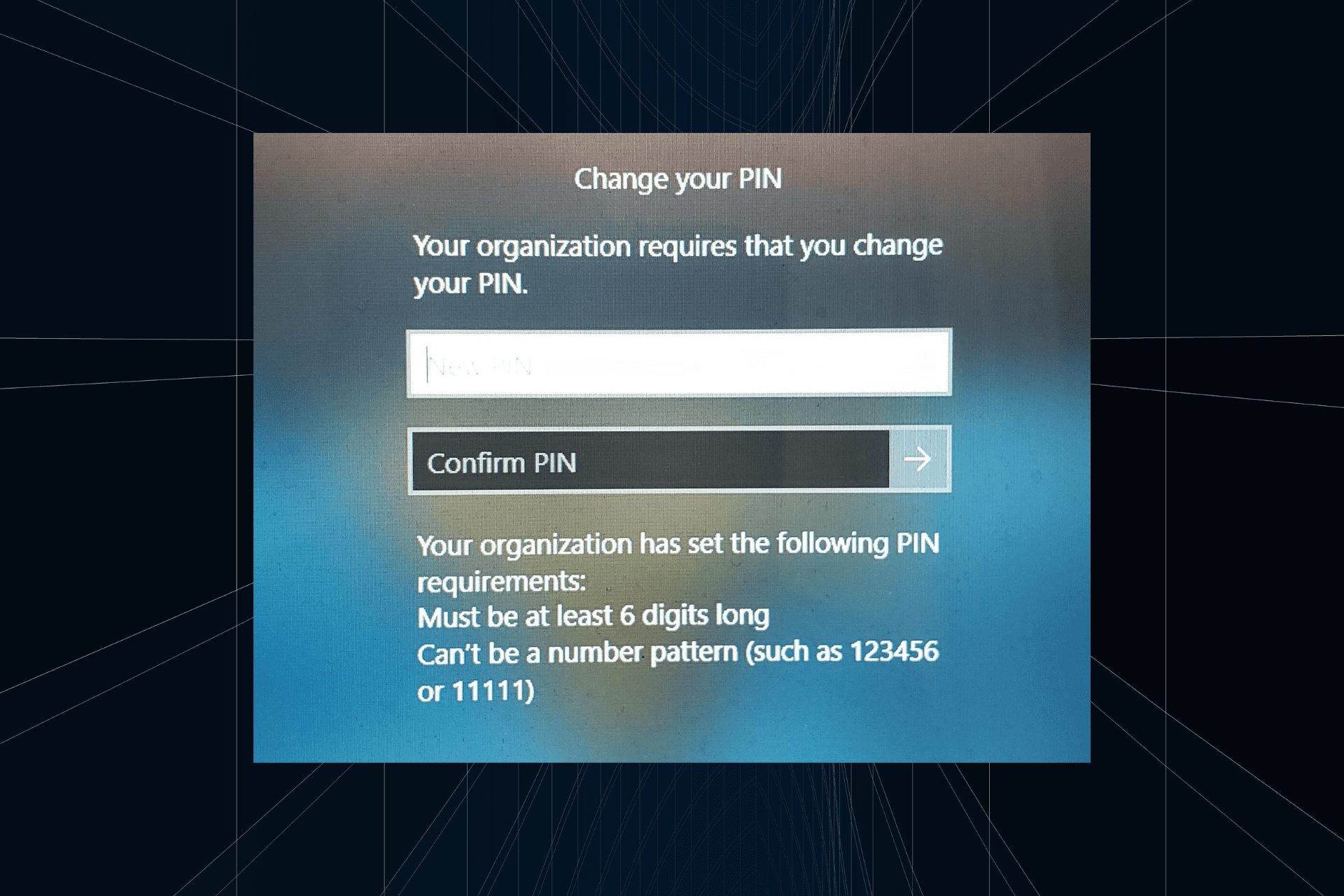 解决方法:您的组织要求您更改 PIN 码Oct 04, 2023 pm 05:45 PM
解决方法:您的组织要求您更改 PIN 码Oct 04, 2023 pm 05:45 PM“你的组织要求你更改PIN消息”将显示在登录屏幕上。当在使用基于组织的帐户设置的电脑上达到PIN过期限制时,就会发生这种情况,在该电脑上,他们可以控制个人设备。但是,如果您使用个人帐户设置了Windows,则理想情况下不应显示错误消息。虽然情况并非总是如此。大多数遇到错误的用户使用个人帐户报告。为什么我的组织要求我在Windows11上更改我的PIN?可能是您的帐户与组织相关联,您的主要方法应该是验证这一点。联系域管理员会有所帮助!此外,配置错误的本地策略设置或不正确的注册表项也可能导致错误。即
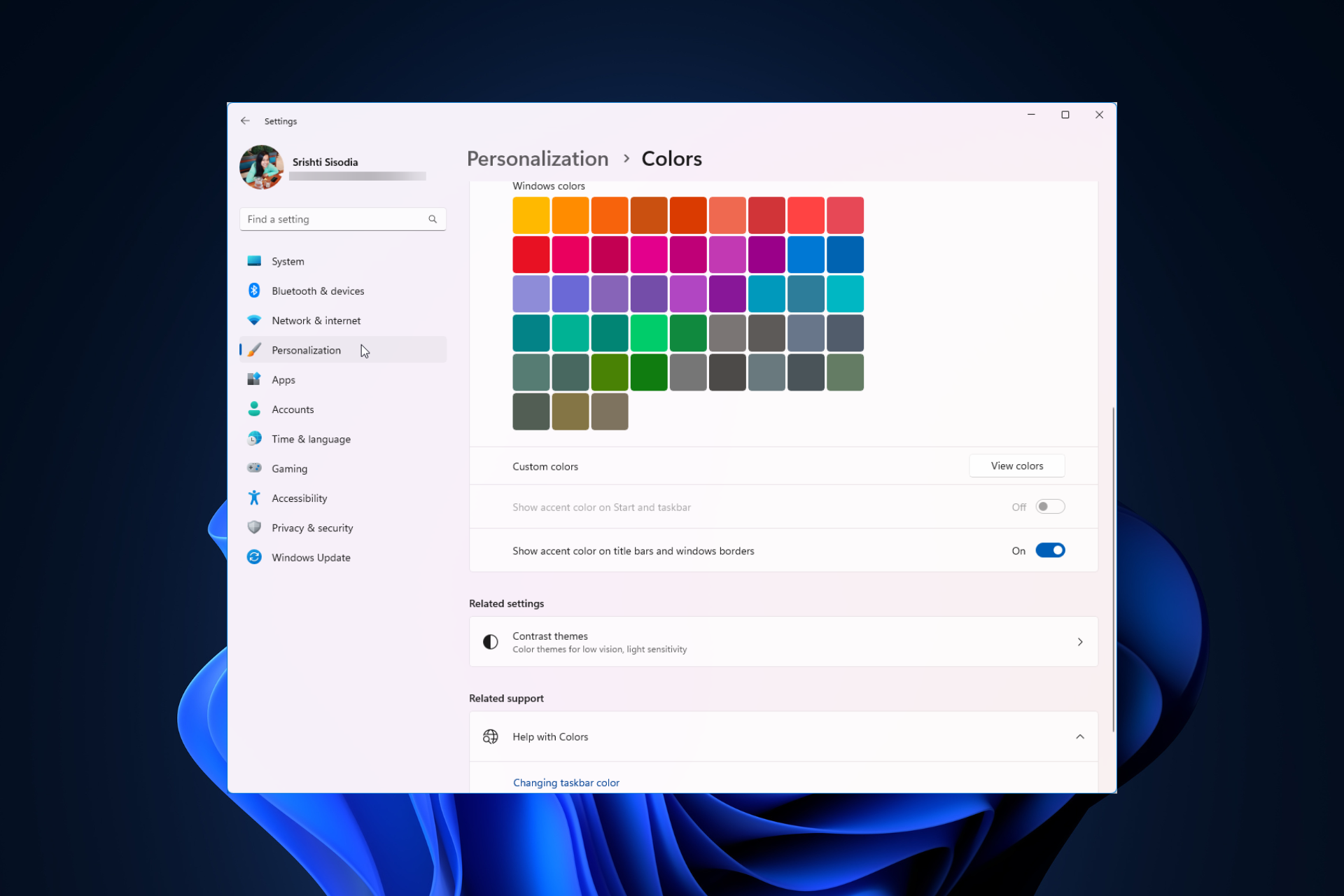 Windows 11 上调整窗口边框设置的方法:更改颜色和大小Sep 22, 2023 am 11:37 AM
Windows 11 上调整窗口边框设置的方法:更改颜色和大小Sep 22, 2023 am 11:37 AMWindows11将清新优雅的设计带到了最前沿;现代界面允许您个性化和更改最精细的细节,例如窗口边框。在本指南中,我们将讨论分步说明,以帮助您在Windows操作系统中创建反映您的风格的环境。如何更改窗口边框设置?按+打开“设置”应用。WindowsI转到个性化,然后单击颜色设置。颜色更改窗口边框设置窗口11“宽度=”643“高度=”500“>找到在标题栏和窗口边框上显示强调色选项,然后切换它旁边的开关。若要在“开始”菜单和任务栏上显示主题色,请打开“在开始”菜单和任务栏上显示主题
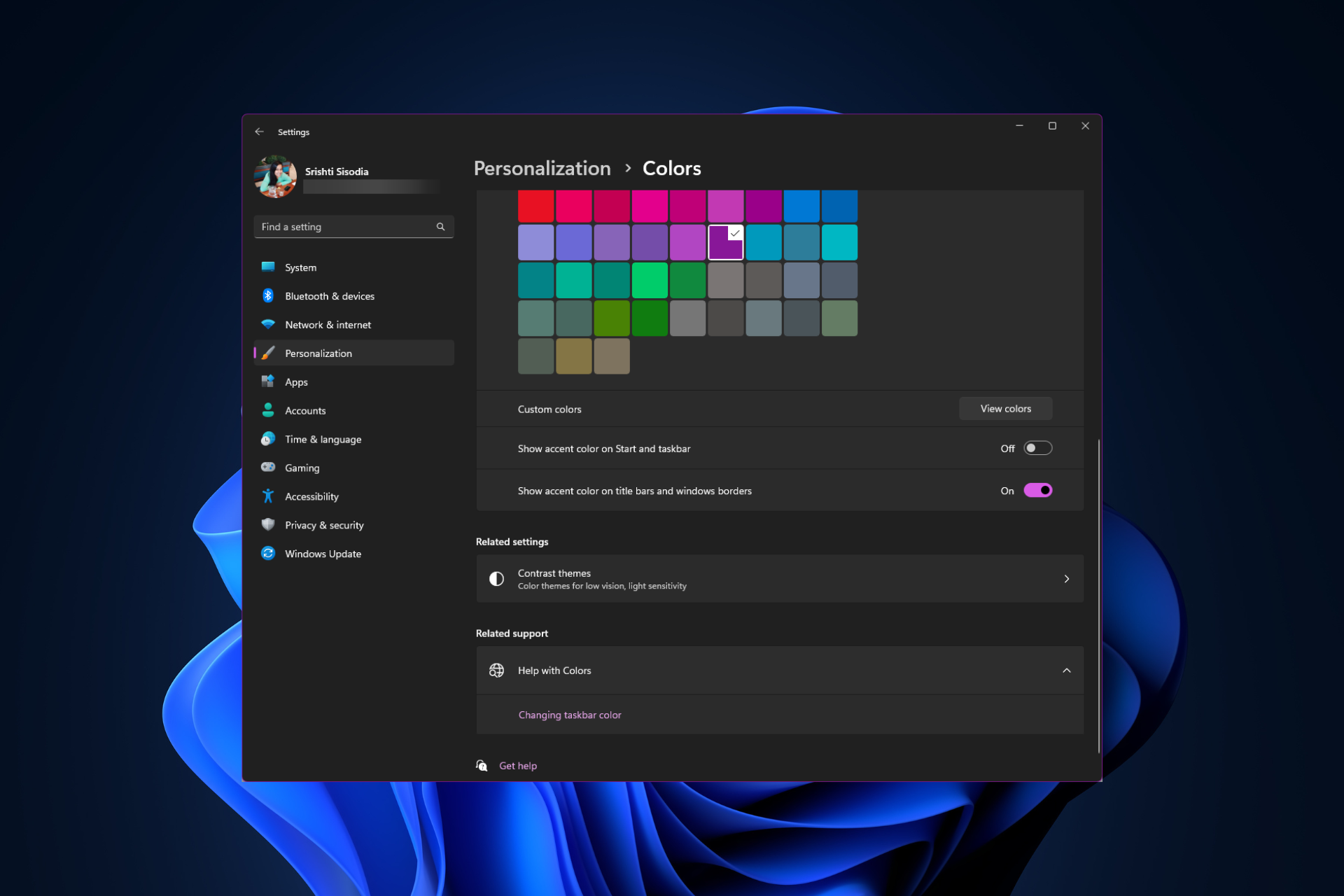 如何在 Windows 11 上更改标题栏颜色?Sep 14, 2023 pm 03:33 PM
如何在 Windows 11 上更改标题栏颜色?Sep 14, 2023 pm 03:33 PM默认情况下,Windows11上的标题栏颜色取决于您选择的深色/浅色主题。但是,您可以将其更改为所需的任何颜色。在本指南中,我们将讨论三种方法的分步说明,以更改它并个性化您的桌面体验,使其具有视觉吸引力。是否可以更改活动和非活动窗口的标题栏颜色?是的,您可以使用“设置”应用更改活动窗口的标题栏颜色,也可以使用注册表编辑器更改非活动窗口的标题栏颜色。若要了解这些步骤,请转到下一部分。如何在Windows11中更改标题栏的颜色?1.使用“设置”应用按+打开设置窗口。WindowsI前往“个性化”,然
 OOBELANGUAGE错误Windows 11 / 10修复中出现问题的问题Jul 16, 2023 pm 03:29 PM
OOBELANGUAGE错误Windows 11 / 10修复中出现问题的问题Jul 16, 2023 pm 03:29 PM您是否在Windows安装程序页面上看到“出现问题”以及“OOBELANGUAGE”语句?Windows的安装有时会因此类错误而停止。OOBE表示开箱即用的体验。正如错误提示所表示的那样,这是与OOBE语言选择相关的问题。没有什么可担心的,你可以通过OOBE屏幕本身的漂亮注册表编辑来解决这个问题。快速修复–1.单击OOBE应用底部的“重试”按钮。这将继续进行该过程,而不会再打嗝。2.使用电源按钮强制关闭系统。系统重新启动后,OOBE应继续。3.断开系统与互联网的连接。在脱机模式下完成OOBE的所
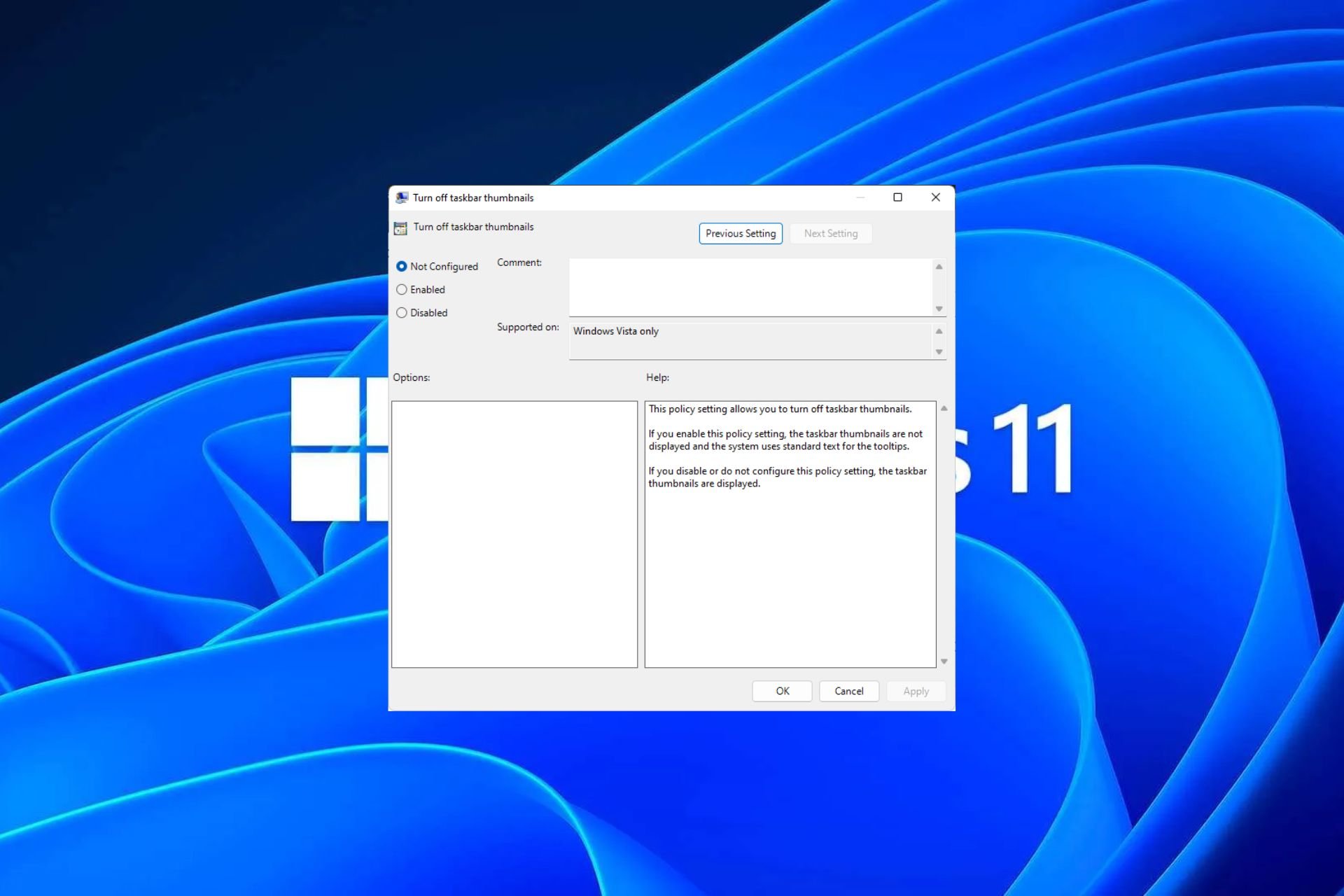 Windows 11 上启用或禁用任务栏缩略图预览的方法Sep 15, 2023 pm 03:57 PM
Windows 11 上启用或禁用任务栏缩略图预览的方法Sep 15, 2023 pm 03:57 PM任务栏缩略图可能很有趣,但它们也可能分散注意力或烦人。考虑到您将鼠标悬停在该区域的频率,您可能无意中关闭了重要窗口几次。另一个缺点是它使用更多的系统资源,因此,如果您一直在寻找一种提高资源效率的方法,我们将向您展示如何禁用它。不过,如果您的硬件规格可以处理它并且您喜欢预览版,则可以启用它。如何在Windows11中启用任务栏缩略图预览?1.使用“设置”应用点击键并单击设置。Windows单击系统,然后选择关于。点击高级系统设置。导航到“高级”选项卡,然后选择“性能”下的“设置”。在“视觉效果”选
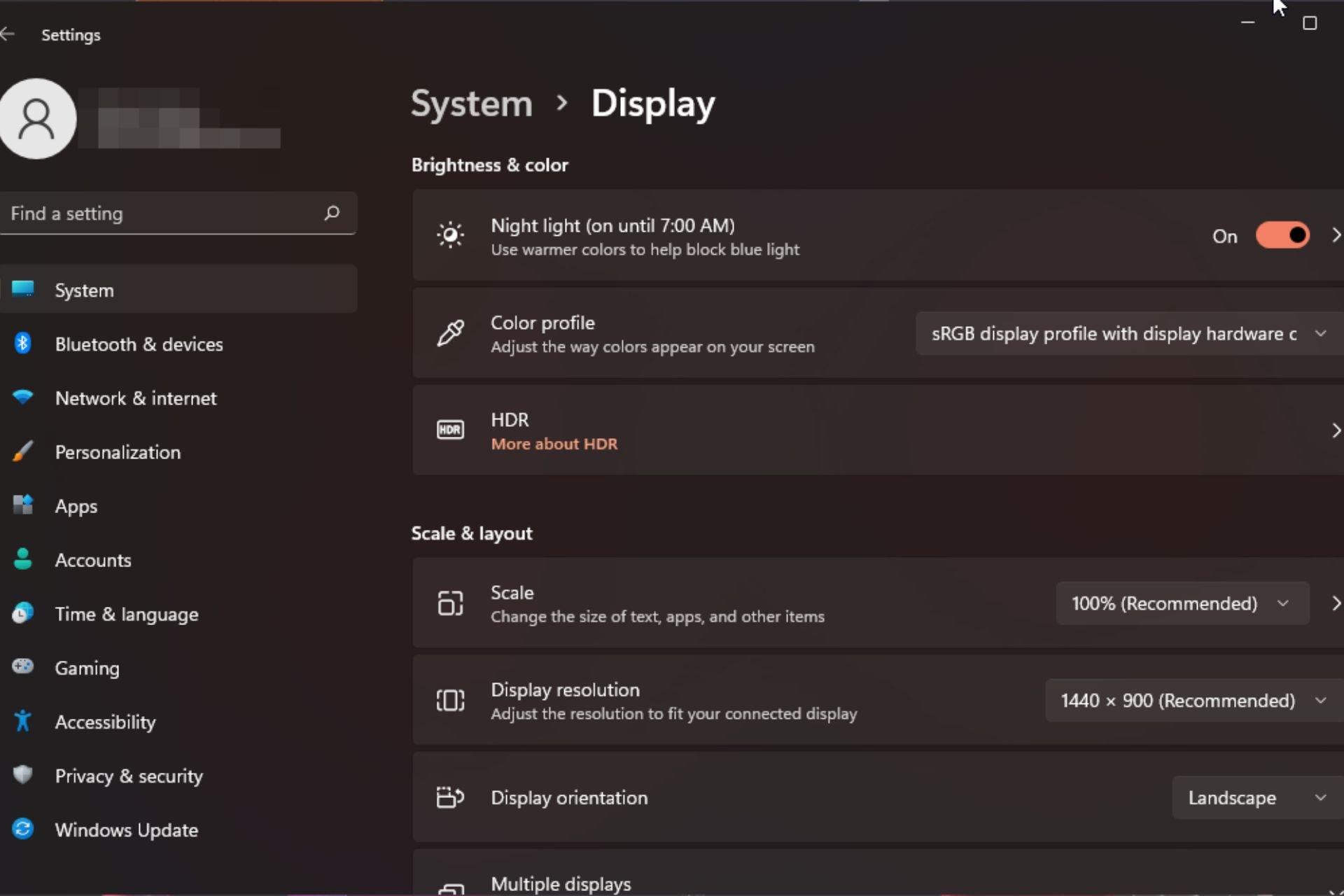 Windows 11 上的显示缩放比例调整指南Sep 19, 2023 pm 06:45 PM
Windows 11 上的显示缩放比例调整指南Sep 19, 2023 pm 06:45 PM在Windows11上的显示缩放方面,我们都有不同的偏好。有些人喜欢大图标,有些人喜欢小图标。但是,我们都同意拥有正确的缩放比例很重要。字体缩放不良或图像过度缩放可能是工作时真正的生产力杀手,因此您需要知道如何对其进行自定义以充分利用系统功能。自定义缩放的优点:对于难以阅读屏幕上的文本的人来说,这是一个有用的功能。它可以帮助您一次在屏幕上查看更多内容。您可以创建仅适用于某些监视器和应用程序的自定义扩展配置文件。可以帮助提高低端硬件的性能。它使您可以更好地控制屏幕上的内容。如何在Windows11
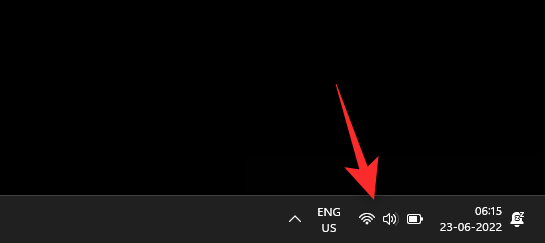 10种在 Windows 11 上调整亮度的方法Dec 18, 2023 pm 02:21 PM
10种在 Windows 11 上调整亮度的方法Dec 18, 2023 pm 02:21 PM屏幕亮度是使用现代计算设备不可或缺的一部分,尤其是当您长时间注视屏幕时。它可以帮助您减轻眼睛疲劳,提高易读性,并轻松有效地查看内容。但是,根据您的设置,有时很难管理亮度,尤其是在具有新UI更改的Windows11上。如果您在调整亮度时遇到问题,以下是在Windows11上管理亮度的所有方法。如何在Windows11上更改亮度[10种方式解释]单显示器用户可以使用以下方法在Windows11上调整亮度。这包括使用单个显示器的台式机系统以及笔记本电脑。让我们开始吧。方法1:使用操作中心操作中心是访问
 如何在Safari中关闭iPhone的隐私浏览身份验证?Nov 29, 2023 pm 11:21 PM
如何在Safari中关闭iPhone的隐私浏览身份验证?Nov 29, 2023 pm 11:21 PM在iOS17中,Apple为其移动操作系统引入了几项新的隐私和安全功能,其中之一是能够要求对Safari中的隐私浏览选项卡进行二次身份验证。以下是它的工作原理以及如何将其关闭。在运行iOS17或iPadOS17的iPhone或iPad上,如果您在Safari浏览器中打开了任何“无痕浏览”标签页,然后退出会话或App,Apple的浏览器现在需要面容ID/触控ID认证或密码才能再次访问它们。换句话说,如果有人在解锁您的iPhone或iPad时拿到了它,他们仍然无法在不知道您的密码的情况下查看您的隐私


핫 AI 도구

Undresser.AI Undress
사실적인 누드 사진을 만들기 위한 AI 기반 앱

AI Clothes Remover
사진에서 옷을 제거하는 온라인 AI 도구입니다.

Undress AI Tool
무료로 이미지를 벗다

Clothoff.io
AI 옷 제거제

AI Hentai Generator
AI Hentai를 무료로 생성하십시오.

인기 기사

뜨거운 도구

스튜디오 13.0.1 보내기
강력한 PHP 통합 개발 환경

메모장++7.3.1
사용하기 쉬운 무료 코드 편집기

SecList
SecLists는 최고의 보안 테스터의 동반자입니다. 보안 평가 시 자주 사용되는 다양한 유형의 목록을 한 곳에 모아 놓은 것입니다. SecLists는 보안 테스터에게 필요할 수 있는 모든 목록을 편리하게 제공하여 보안 테스트를 더욱 효율적이고 생산적으로 만드는 데 도움이 됩니다. 목록 유형에는 사용자 이름, 비밀번호, URL, 퍼징 페이로드, 민감한 데이터 패턴, 웹 셸 등이 포함됩니다. 테스터는 이 저장소를 새로운 테스트 시스템으로 간단히 가져올 수 있으며 필요한 모든 유형의 목록에 액세스할 수 있습니다.

ZendStudio 13.5.1 맥
강력한 PHP 통합 개발 환경

에디트플러스 중국어 크랙 버전
작은 크기, 구문 강조, 코드 프롬프트 기능을 지원하지 않음







